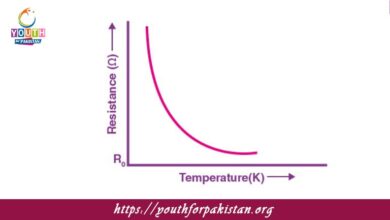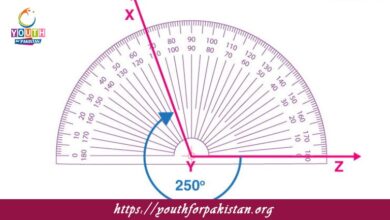Mendel’s Law Of Inheritance MDCAT MCQs with Answers

Welcome to the Mendel‟S Law Of Inheritance MDCAT MCQs with Answers. In this post, we have shared Mendel‟S Law Of Inheritance Multiple Choice Questions and Answers for PMC MDCAT 2024. Each question in MDCAT Biology offers a chance to enhance your knowledge regarding Mendel‟S Law Of Inheritance MCQs in this MDCAT Online Test.
Mendel’s Law of Segregation states that:
a) Alleles for different traits are passed independently
b) Each individual has two alleles for each gene, which segregate during gamete formation
c) Dominant alleles mask recessive alleles in a heterozygote
d) Alleles for a single trait separate independently of each other
In a monohybrid cross, the F2 generation phenotypic ratio is:
a) 1:2:1
b) 3:1
c) 9:3:3:1
d) 1:1
The Law of Independent Assortment applies to:
a) Genes located on the same chromosome
b) Genes located on different chromosomes
c) Genes that are closely linked
d) Genes that are not expressed
In a dihybrid cross, the phenotypic ratio of the F2 generation is:
a) 1:2:1
b) 3:1
c) 9:3:3:1
d) 1:1
According to Mendel’s Law of Segregation, gametes will have:
a) Both alleles for a gene
b) No alleles for a gene
c) Only one allele for each gene
d) All alleles for all genes
Which of the following represents a homozygous dominant genotype?
a) AA
b) Aa
c) aa
d) Ab
In Mendelian genetics, a recessive trait is expressed only when:
a) Two dominant alleles are present
b) Two recessive alleles are present
c) One dominant and one recessive allele are present
d) It is linked with another recessive trait
Mendel’s Law of Independent Assortment was demonstrated by:
a) Crossing true-breeding plants with different traits
b) Observing the phenotypes of offspring from self-pollination
c) Examining gene linkage in fruit flies
d) Studying the effects of environmental changes on gene expression
The principle that alleles for different traits are passed independently of each other is known as:
a) Law of Segregation
b) Law of Independent Assortment
c) Law of Dominance
d) Law of Uniformity
If a plant with the genotype AaBb is crossed with another AaBb plant, the resulting phenotypic ratio for two traits will be:
a) 1:2:1
b) 3:1
c) 9:3:3:1
d) 1:1:1:1
What does Mendel’s Law of Dominance state?
a) Some alleles are dominant and others are recessive
b) All alleles have equal effects on the phenotype
c) Dominant alleles are never expressed
d) Recessive alleles always mask dominant alleles
In a test cross, an organism with a dominant phenotype is crossed with a:
a) Homozygous dominant
b) Heterozygous dominant
c) Homozygous recessive
d) Heterozygous recessive
A test cross is used to determine the genotype of an organism with:
a) A recessive phenotype
b) A dominant phenotype
c) A heterozygous phenotype
d) An unknown genotype
In Mendelian genetics, a Punnett square is used to:
a) Determine the genotype of offspring
b) Predict the number of offspring
c) Calculate the probability of different genotypes and phenotypes
d) Measure the dominance of traits
Which of the following is an example of a monohybrid cross?
a) AaBb x AaBb
b) AA x aa
c) Aa x aa
d) Aabb x Aabb
When two heterozygous individuals are crossed, the genotypic ratio of the F2 generation is:
a) 1:2:1
b) 3:1
c) 9:3:3:1
d) 1:1:1:1
The Law of Uniformity states that:
a) All offspring of two homozygous parents will have the same phenotype
b) Offspring will show a mix of both parents’ traits
c) Dominant traits will always be recessive
d) Recessive traits are never expressed
If an organism has a genotype of Bb, the possible gametes it can produce are:
a) BB, Bb
b) Bb, bb
c) B, b
d) B, BB
In a dihybrid cross, if both parents are heterozygous for two traits (AaBb x AaBb), the expected phenotypic ratio is:
a) 3:1
b) 1:2:1
c) 9:3:3:1
d) 1:1:1:1
Which of the following genotypes represents a heterozygous individual?
a) AA
b) Aa
c) aa
d) BB
Mendel’s Law of Segregation involves:
a) The separation of alleles during gamete formation
b) The independent assortment of genes
c) The dominance of one allele over another
d) The uniform expression of alleles
Which principle explains why offspring inherit different combinations of traits from their parents?
a) Principle of Segregation
b) Principle of Independent Assortment
c) Principle of Dominance
d) Principle of Uniformity
In a monohybrid cross, if both parents are heterozygous (Aa), what is the probability that the offspring will be homozygous recessive (aa)?
a) 25%
b) 50%
c) 75%
d) 100%
The genotypic ratio of the F2 generation in a monohybrid cross is:
a) 1:2:1
b) 3:1
c) 9:3:3:1
d) 1:1
In Mendelian genetics, which type of cross involves tracking two traits at the same time?
a) Monohybrid cross
b) Dihybrid cross
c) Test cross
d) Back cross
According to Mendel’s principle of dominance, which allele will be expressed in the phenotype?
a) Recessive allele
b) Dominant allele
c) Neither allele
d) Both alleles equally
If a homozygous dominant individual (AA) is crossed with a homozygous recessive individual (aa), what will be the genotype of the F1 generation?
a) AA
b) Aa
c) aa
d) Aaa
In a test cross, if all offspring show the dominant phenotype, the genotype of the dominant phenotype parent is most likely:
a) Homozygous dominant
b) Heterozygous
c) Homozygous recessive
d) Undefined
The phenotypic ratio of the F2 generation in a dihybrid cross is:
a) 1:1:1:1
b) 3:1
c) 9:3:3:1
d) 1:2:1
According to Mendel’s Law of Segregation, each parent contributes:
a) Two alleles to the offspring
b) One allele to the offspring
c) No alleles to the offspring
d) All alleles to the offspring
Which of the following statements is true about Mendel’s Law of Independent Assortment?
a) It applies only to genes on the same chromosome
b) It states that allele pairs separate independently in the formation of gametes
c) It states that dominant traits are always expressed
d) It explains the dominance of one trait over another
If a heterozygous individual (Aa) is crossed with a homozygous recessive individual (aa), the expected genotypic ratio of the offspring is:
a) 1:1
b) 3:1
c) 1:2:1
d) 9:3:3:1
The Law of Segregation ensures that:
a) Each gamete receives both alleles for a trait
b) Each gamete receives one allele for a trait
c) Traits are inherited independently of each other
d) Alleles for a trait are always dominant
The expected phenotypic ratio for a dihybrid cross involving two heterozygous parents is:
a) 1:2:1
b) 3:1
c) 9:3:3:1
d) 1:1:1:1
In Mendelian genetics, a recessive trait:
a) Can be expressed only if two recessive alleles are present
b) Is always masked by a dominant allele
c) Is expressed in the presence of one dominant allele
d) Is not inherited
The Law of Uniformity applies to:
a) The phenotypes of F1 offspring from two homozygous parents
b) The genotypes of F2 offspring from two heterozygous parents
c) The phenotypic ratios of F2 generation in dihybrid crosses
d) The inheritance of traits in a population
In Mendel’s experiments, when he crossed two true-breeding plants with different traits, the F1 generation was:
a) Always homozygous for both traits
b) Heterozygous for both traits
c) Phenotypically uniform
d) Genotypically diverse
The term “homozygous” refers to:
a) An individual with two different alleles for a gene
b) An individual with two identical alleles for a gene
c) An individual with no alleles for a gene
d) An individual with multiple alleles for a gene
In a monohybrid cross, the term “dominant” refers to:
a) An allele that is expressed only in the homozygous state
b) An allele that is expressed in the presence of another allele
c) An allele that is always recessive
d) An allele that does not affect the phenotype
If an individual with genotype AaBb is crossed with an individual with genotype AaBb, what is the phenotypic ratio for each trait in the F2 generation?
a) 1:1
b) 3:1
c) 9:3:3:1
d) 1:2:1
Which principle explains why alleles separate during the formation of gametes?
a) Law of Dominance
b) Law of Independent Assortment
c) Law of Segregation
d) Law of Uniformity
In Mendelian genetics, a phenotype is:
a) The genetic makeup of an organism
b) The observable traits of an organism
c) The number of alleles an organism has
d) The combination of alleles in a population
If an individual with genotype AaBb is crossed with an individual with genotype Aabb, what is the expected phenotypic ratio for each trait in the F1 generation?
a) 1:1
b) 3:1
c) 9:3:3:1
d) 1:2:1
Mendel’s experiments primarily involved which type of organisms?
a) Fruit flies
b) Mice
c) Pea plants
d) Bacteria
The genotype of an organism is determined by:
a) Its observable traits
b) The alleles it inherits from its parents
c) The number of offspring it produces
d) The environment in which it lives
In a dihybrid cross, the expected genotypic ratio in the F2 generation is:
a) 1:2:1
b) 3:1
c) 9:3:3:1
d) 1:1:1:1
The principle of uniformity in Mendelian genetics refers to:
a) The consistency of phenotypes in the F1 generation when two homozygous parents are crossed
b) The consistency of genotypes in the F2 generation when two heterozygous parents are crossed
c) The uniform distribution of alleles in gametes
d) The uniformity of genetic material in a population
The phenotypic ratio of the F2 generation from a cross between two heterozygous individuals (Aa x Aa) is:
a) 1:1
b) 3:1
c) 9:3:3:1
d) 1:2:1
If you are interested to enhance your knowledge regarding Physics, Chemistry, Computer, and Biology please click on the link of each category, you will be redirected to dedicated website for each category.




